You Can’t Stretch a Muscle: Muscles Simply Increase Their “Stretch Tolerance”
“We are thinking about stretching and flexibility all wrong,” said Jorden Gold, founder of Stretch Zone. “It is time to stop thinking about muscle length, and instead think about ‘muscle extensibility’. Stop thinking about becoming more ‘flexible’ but more ‘extendable’.”
It probably goes against everything you’ve been told, but did you know you cannot truly ‘stretch’ a muscle? Our muscles are actually not very elastic. Muscle length does not truly change despite what the word ‘stretch’ implies. Muscles do not stretch.
In reality, muscles extend and retract. Think of your muscles like an extension ladder. Muscles open and close, yet no matter what, the length remains the same. Picture a 12 foot extension ladder: it can appear to be anywhere between six and 12 feet long depending upon how it is adjusted, but it will always be a 12 foot extension ladder.
The same principle applies for the length of your hamstring or any other muscle in your body. The length of your hamstring does not change when you stretch. Stretching simply extends your muscle farther and farther before the muscle locks. As you lengthen an extension ladder, you can hear the rung lock as it clicks over each rung, one at a time. However, once it locks onto a rung, any further movement is not possible without breaking the ladder. The distance that you are able to extend the ladder is determined by the sensitivity of the rung lock. The distance you are able to extend a muscle is determined by the sensitivity of the stretch reflex, which is our body’s automatic defense against the dangerous and damaging overstretching.
Muscle extensibility = increased stretch tolerance
Consider this scenario: when you place your foot up on a bench and lean forward, you feel a slight stretch in your hamstring. You may stop, breathe and wait for the muscle tension to lessen. Eventually, you determine that you can go a little further into the stretch until you again feel tension that pauses your progress. What happens following the pause when you are able to stretch farther? Your muscle did not suddenly ‘stretch’ after a delay. Instead, the sensors in your muscle sent a signal to your central nervous system alerting your body that the situation was safe. Then your nervous system relayed back a message allowing the muscle to relax. It was as if the lock on the ladder opened and allowed the ladder to extend one or two more rungs before locking once again. Muscle inhibition allows muscle to unlock and extend open.
Muscles do not “stretch” to a longer length, but they can extend further and further by increasing their “tolerance” to a stretch.
More and more research shows that stretching does not make muscles permanently longer. Instead, stretching re-educates the nervous system to tolerate a greater degree of muscle extension without firing pain signals. It’s simple: muscles are not short or long and cannot significantly change length without injury. When a muscle or muscle group demonstrates insufficient extensibility, the muscle appears to be short, and the contraction results in restricted motion. But when a muscle or muscle group demonstrates excessive extensibility, it appears to be long, which results in limber movement and even excessive motion. But you can have too much of a good thing. Deviations from optimal extensibility contribute to muscle imbalances, faulty posture and even dysfunctional movement.
Work with your nervous system to achieve lasting gains
Gaining and maintaining extensibility involves training the nervous system to relax the muscle. When we increase our range of motion through stretching, it isn’t because we pulled on our tissues and made them longer. It is because we repetitively moved to the edge of our “stretch tolerance” enough times that the central nervous system began to allow us to move deeper into that stretch.
Building your “stretch tolerance” like any tolerance is about repetition. The key to increasing your range of motion is to continuously move just outside your comfort zone – just to the point of resistance – and then returning to a comfortable neutral tension. By repeatedly moving just slightly into and out of this ‘Stretch Zone,’ you will expand your comfort zone and functional range of motion.
Stretch Zone provides guests with Flex-ability for Life®. Using proprietary stretching methods and a patented stabilization system, Stretch Zone seeks to improve guest health and wellness through practitioner-guided stretching. For more than 15 years, Stretch Zone has helped many individuals seeking a solution to help them feel better and live life to the fullest. Stretch Zone facilities offer a welcoming environment, knowledgeable staff and comfortable equipment, all of which allow clients to relax and fully benefit from our methods. Stretch Zone has convenient locations throughout the United States. Learn more at stretchzone.com
Weppler, C. H., & Magnusson, S. P. (2010). Increasing muscle extensibility: a matter of increasing length or modifying sensation? Physical Therapy, 90(3), 438–449. doi:10.2522/ptj.20090012 https://pubmed.ncbi.nlm.nih.gov/20075147/
Marshall, P. W. M., Cashman, A., & Cheema, B. S. (2011). A randomized controlled trial for the effect of passive stretching on measures of hamstring extensibility, passive stiffness, strength, and stretch tolerance. Journal of Science and Medicine in Sport, 14(6), 535–540. doi:10.1016/j.jsams.2011.05.003 Https://pubmed.ncbi.nlm.nih.gov/21636321/
Can apparent increases in muscle extensibility with regular stretch be explained by changes in tolerance to stretch? Hollie Folpp 1, Simon Deall, Lisa A Harvey, Tom Gwinn Affiliations expand PMID: 16515422 DOI: 10.1016/s0004-9514(06)70061-7 https://pubmed.ncbi.nlm.nih.gov/16515422/




